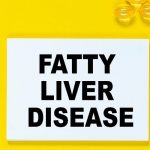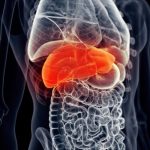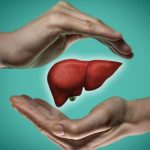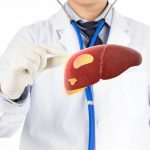Dangerous Bilirubin Levels in Adults (According to the Cause)
Our content is not intended nor recommended as a substitute for medical advice by your doctor. Use for informational purposes only.
As a gastroenterologist, I always get this question from my patients with elevated bilirubin:
is my bilirubin level dangerous?
However, No one-size answer fits all of my patients.
That’s because the dangerous levels of bilirubin depend on many factors:
- The original cause of high bilirubin (acute or chronic).
- The likelihood of rapid recovery.
- And whether the condition is curable or not.
So, In this article, I will try to answer your question about dangerous bilirubin levels according to each case separately.
Covering 8 of the most common causes of bilirubin elevations in adults, including:
- Chronic viral hepatitis.
- Acute hepatitis A.
- Acute biliary obstruction (often by a gallstone or cancer).
- Alcoholic liver disease (alcoholic hepatitis).
- Nonalcoholic steatohepatitis.
- Acute hepatitis B.
- Gilbert’s syndrome.
- Chronic hemolytic anemia.
- And others.
1. Chronic viral hepatitis.
Chronic liver infections with either hepatitis C or B virus are among the most common causes of hepatitis worldwide and in the USA.
They often cause mild to moderate elevations of liver enzymes (ALT and AST). However, some people may also develop elevations in serum bilirubin.
Chronic hepatitis C is now a completely curable disease with the development of new drugs (Direct-acting antiviral agents). So, I assume it is not an issue nowadays.
Back to our point of interest; what are dangerous bilirubin levels in chronic viral hepatitis?
Patients with chronic hepatitis B and C often shouldn’t have elevated bilirubin levels. Elevated bilirubin levels due to chronic inflammation are considered a bad prognostic sign.
Even slight elevations mean that the inflammation is significant. Particularly with chronic hepatitis B, A new rise in liver enzymes and/or bilirubin may mean that the virus is out of control.
Very mild elevations in serum bilirubin (below 2mg/dL) can be experienced in patients with chronic hepatitis. However, any levels above that often mean the inflammation is significant and should be controlled.
Learn more about chronic hepatitis.
2. Acute hepatitis A.
Acute hepatitis A is an infection with acute hepatitis that primarily affects children. But it can also affect adults and cause very high levels of bilirubin.
However, the condition is self-limiting, with cure rates in more than 95% of adults (reference).
The danger levels of bilirubin with acute hepatitis don’t depend only on its degree but also its duration.
Typically, bilirubin levels in adults with acute hepatitis are around 10 mg/dL. Jaundice and elevated bilirubin resolve gradually, but it may take 3-6 months to revert to normal completely.
Also, jaundice (bilirubin levels) often peaks two weeks after illness onset.
Bilirubin levels can be dangerous when it becomes markedly elevated (often to very high levels above 15 or 20).
Also, about 5% of adults may experience cholestatic hepatitis due to hepatitis A. A persistently elevated bilirubin (above 10 mg/dL) is common in this condition.
So, bilirubin levels are considered problematic in adults when it reaches very high levels (often Above 20 mg/dl) or when it becomes persistently elevated for more than three months (above 10 mg/dL).
Learn More about hepatitis A in adults.
3. Acute biliary obstruction.
You have a system of small and large ducts connecting your liver to the duodenum (the first part of the small intestine). This system is called the biliary system containing small ducts inside the liver, the right and left hepatic ducts, and the common bile duct.
Sometimes, the common bile duct becomes obstructed by:
- A gallstone.
- Cancer head of the pancreas.
- A biliary tumor (cholangiocarcinoma).
- Narrowing (stricture).
- Accidental ligation during cholecystectomy operations.
If the obstruction is complete, the bilirubin levels rapidly increase to dangerous levels if left untreated.
Fortunately, patients with complete biliary obstruction have instant improvement after performing a particular endoscopy called (ERCP).
Although bilirubin may reach dangerous levels such as 20, 30, or even 40 mg/dL, the insertion of a stent to relieve the obstruction often produces a quick drop in bilirubin levels.
No specific levels above which we consider bilirubin is dangerous as long as you are going to relieve the obstruction.
4. Liver cirrhosis.
Liver cirrhosis is the end-stage of untreated chronic liver conditions that cause persistent liver damage, such as:
- Chronic hepatitis B and C.
- Untreated non-alcoholic steatohepatitis.
- Untreated alcoholic hepatitis.
- Untreated autoimmune hepatitis
- And others.
Patients with liver cirrhosis typically have normal or mild elevations of bilirubin levels.
The famous Child-Pugh classifications for the severity of liver cirrhosis include bilirubin as one of the indications of liver damage.
The bilirubin in child classification is as follows:
- Bilirubin levels below 3mg/dL: takes one point.
- Bilirubin from 2 to 3 takes two points.
- Bilirubin levels above 3 take 3 points.
In this classification, more points mean more advanced liver cell failure. Significantly dangerous bilirubin levels in liver cirrhosis are often above 3 mg/dL.
The table below illustrates Child-pugh score for the severity of liver cirrhosis (reference):
The severity of cirrhosis:
- Child-Pugh A: 5 to 6 points
- Child-Pugh B: 7 to 9 points
- Child-Pugh C: 10 to 15 points
5. Alcoholic liver disease and Nonalcoholic steatohepatitis.
Alcoholic liver disease may cause fat accumulation and chronic inflammation of the liver tissue. It is a form of chronic hepatitis.
Also, people with fatty liver may begin to develop hepatitis (called nonalcoholic steatohepatitis or NASH) which has similar effects on the liver to alcohol.
Both alcoholic and nonalcoholic chronic hepatitis cause mild to moderate increases in liver enzymes (ALT and AST).
Typically, bilirubin levels in alcoholic and nonalcoholic hepatitis are normal or slightly elevated.
Bilirubin levels become worrisome when they rise above 2 or 3 mg/dL. Although these levels have no immediate consequence, it reflects a severe or uncontrolled inflammation.
In the long-term, mild elevations of bilirubin in such conditions may accelerate liver damage.
In our practice, a deviation of bilirubin levels is considered significant and requires intervention with treatments or lifestyle modifications.
Learn more about nonalcoholic steatohepatitis.
Learn more about alcoholic liver disease.
6. Gilbert’s syndrome.
Gilbert syndrome is an inherited genetic condition that commonly affects men. It occurs due to a gene defect that leads to an error in bilirubin metabolism.
You may think it is a rare disease, but it is a widespread condition affecting 4-17% of people (at least one in every 20 people has this condition).
Patients with Gilbert syndrome typically have bilirubin levels around 1 to 3 mg/dL.
Bilirubin levels below 3 mg/dL often don’t cause jaundice or other symptoms. And that’s why many people have the condition and don’t even know.
The most common scenario is the accidental discovery of the disease during routine blood work.
During periods of stress (fasting, illness, lack of sleep, etc.), bilirubin levels may increase up to 5 or 6 mg/dL, and jaundice appears.
Atypical, dangerous levels of gilbert syndrome are persistent elevations above 5 or 6 mg/dL. Therefore, consider an alternative diagnosis if the bilirubin levels are persistently elevated above 6 mg/dL.
7. Chronic hemolytic anemias.
Jaundice and elevated bilirubin levels don’t always mean liver disease. Instead, jaundice can result from red blood cells’ destruction (hemolysis) (RBCs).
The process of excessive destruction of RBCs is called hemolytic anemia. This type of anemia occurs due to various causes, commonly thalassemia, sickle cell disease, and autoimmune hemolysis.
In hemolytic anemia, the bilirubin levels are typically mildly or moderately elevated.
In chronic hemolysis, levels often range from 1 to 5 mg/dL. However, people may experience acute episodes of hemolysis where bilirubin may reach dangerous levels (above 10 or 15 mg/dL).
Learn More about hemolytic anemias.
A word from the author:
- There is no defined cut-off for a (dangerous bilirubin level) for each case. Therefore, the number mentioned in this article is mainly from our own experience in clinical practice.
- For the same disease, a certain bilirubin level can be hazardous to patients and safe for other s, depending on the duration and comorbidities in some patients.
- This topic didn’t cover all the spectrum of liver disease. For example, other liver diseases may have different danger ranges of bilirubin (autoimmune hepatitis, sclerosing cholangitis, and intrahepatic cholestasis of pregnancy).
- So, always discuss the issue with your doctor, who knows your conditions, co-morbid disease, and all the circumstances.
- And always, stay safe!
- Evidence-based
- Written by a doctor.






